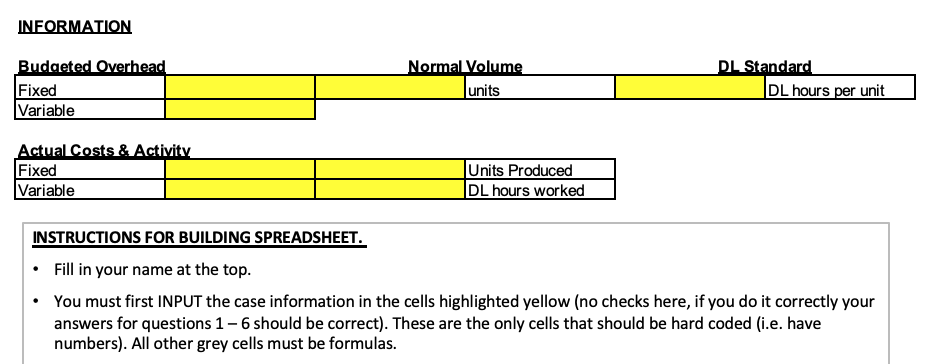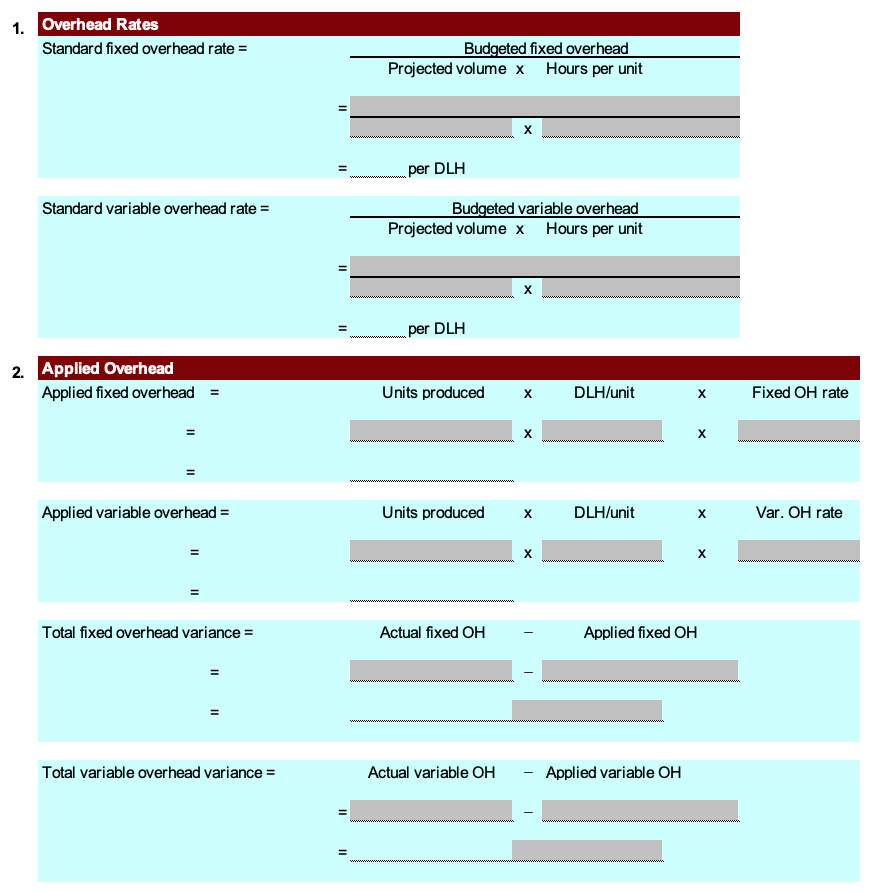



RefrigiWear produces extreme cold weather jackets. RefrigiWear uses a standard costing system. The standard costing system relies on direct labor hours to assign overhead costs to production. The direct labor standard indicates that two direct labor hours should be used for every item produced. The normal production volume is 75,000 jackets. The budgeted overhead for the coming year is as follows: Fixed overhead Variable overhead *At normal volume $562,500 $327,000* RefrigiWear applies overhead on the basis of direct labor hours. During the year, RefrigiWear produced 73,200 jackets, worked 148,500 direct labor hours, and incurred actual fixed overhead costs of $574,320 and actual variable overhead costs of $323,750. Required 1. Calculate the standard fixed overhead rate and the standard variable overhead rate. 2. Compute the applied fixed overhead and the applied variable overhead. What is the total fixed overhead variance? Total variable overhead variance? 3. Break down the total fixed overhead variance into a spending variance and a volume variance. 4. Compute the variable overhead spending and efficiency variances. 5. Now assume that RefrigiWear's cost accounting system reveals only the total actual overhead. In this case, a three-variance analysis can be performed. Using the relationships between a three- and four- variance analysis, indicate the values for the three overhead variances. 6. Prepare the journal entries that would be related to fixed and variable overhead during the year and at the end of the year. Assume variances are closed to Cost of Goods Sold. INFORMATION Budgeted Overhead Fixed Variable Normal Volume units DL Standard DL hours per unit Actual Costs & Activity Fixed Variable Units Produced DL hours worked INSTRUCTIONS FOR BUILDING SPREADSHEET. Fill in your name at the top. You must first INPUT the case information in the cells highlighted yellow (no checks here, if you do it correctly your answers for questions 1 - 6 should be correct). These are the only cells that should be hard coded (i.e. have numbers). All other grey cells must be formulas. 1. Overhead Rates Standard fixed overhead rate = Budgeted fixed overhead Projected volume x Hours per unit = II per DLH Standard variable overhead rate = Budgeted variable overhead Projected volume x Hours per unit = Il per DLH 2. Applied Overhead Applied fixed overhead Il Units produced DLH/unit Fixed OH rate II Applied variable overhead = Units produced DLH/unit X Var. OH rate II Total fixed overhead variance = Actual fixed OH Applied fixed OH II Il Total variable overhead variance = Actual variable OH Applied variable OH II Il 3. Fixed Overhead Variances: Actual Fixed Overhead DH x SFOR SH X SFOR Spending Volume 4. Variable Overhead Variances: Actual Variable Overhead AH X SVOR SH x SVOR Spending Efficiency 5. Three-Variance Analysis Volume variance: Variable OH efficiency variance: Spending variance: 6. Journal Entries Debit Credit










